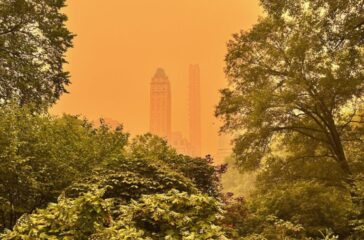As wildfire smoke clears, scientists warn air quality impacts aren’t over
By Shannon Kelleher
On Tuesday morning, Austin Channell was starting his day at home in Hudson, New York when he discovered the rays of sunlight on his wall were an odd orangey pink. As the day progressed, the sky grew stranger.
 EWG
EWG